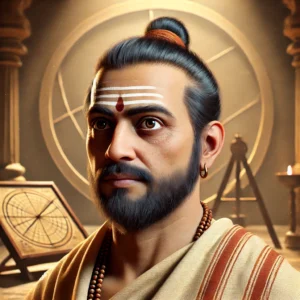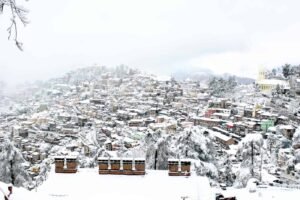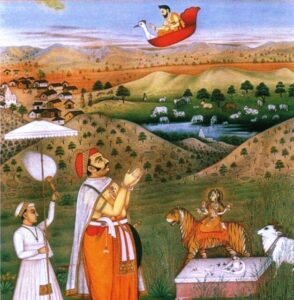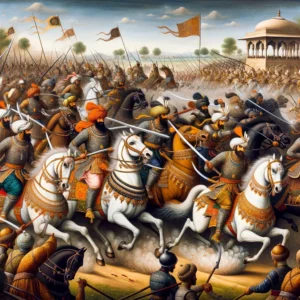Indus Valley
The Indus Valley Civilization (IVC), also known as the Harappan Civilization, was one of the world’s earliest urban cultures, flourishing between 2600 BCE and 1900 BCE. It spanned across present-day Pakistan and northwest India, with its major urban centers like Harappa, Mohenjo-Daro, and Dholavira. This civilization, contemporaneous with those of Mesopotamia and Ancient Egypt, stands out for its urban planning, sophisticated infrastructure, and advanced technologies, which remain subjects of fascination and study.
This article delves into the sophistication of the Indus Valley Civilization, examining its urban planning, technological prowess, economic systems, social structure, cultural expressions, and the factors contributing to its decline. By exploring these aspects, we can appreciate the complexities and achievements of one of the most advanced ancient civilizations.
1. Urban Planning and Architecture
One of the most remarkable aspects of the Indus Valley Civilization was its urban planning and architecture, which reflected a high degree of sophistication and a deep understanding of civil engineering.

City Layout
The cities of the IVC, such as Harappa, Mohenjo-Daro, and Dholavira, were planned using a grid system, which was unprecedented for its time. Streets were laid out in perfect north-south and east-west grids, with wide main streets intersected by narrower lanes. This systematic approach to urban planning suggests a well-organized governance structure capable of large-scale urban design.
These cities were divided into distinct areas, typically referred to as the “citadel” and the “lower town.” The citadel, often elevated, housed important buildings like granaries, public baths, and assembly halls, while the lower town contained residential and commercial buildings. This division not only indicates social stratification but also shows advanced planning in zoning and land use.
Advanced Infrastructure
The infrastructure of the Indus cities was ahead of its time, particularly in the areas of sanitation and water management. The drainage system in Mohenjo-Daro, for example, was highly advanced, with covered drains running beneath the main streets. Every house had access to a bathroom, and waste water was directed into the street drains, which in turn emptied into large brick-lined sewers. This level of public hygiene is unparalleled in contemporary civilizations.
Moreover, the uniformity in brick size across different cities suggests a standardization of construction materials. The baked bricks used in construction were of high quality, fired in kilns to ensure durability. The use of standardized bricks across a vast region points to a controlled manufacturing process, likely overseen by the state.

Public buildings such as the Great Bath of Mohenjo-Daro, a large, well-built structure, likely served as a center for social or religious gatherings, highlighting the emphasis on communal spaces in urban design. Granaries in cities like Harappa also suggest an organized system of food storage and distribution, critical for sustaining large urban populations.
Residential Architecture
Residential buildings in the Indus Valley were equally advanced, reflecting the civilization’s understanding of both functional and aesthetic needs. Houses were typically constructed from uniform bricks and featured flat roofs, often with multiple stories. Many homes had their own wells and bathrooms, a testament to the civilization’s focus on hygiene and comfort.
The integration of residential and commercial spaces within the same neighborhoods indicates a sophisticated approach to urban life. Shops were often attached to the front of houses, blending domestic and commercial activities seamlessly. This level of architectural integration suggests a complex urban society where different aspects of life were interconnected.
2. Technological and Engineering Achievements
The technological and engineering achievements of the Indus Valley Civilization were foundational to its urban success, showcasing their advanced understanding of civil engineering, metallurgy, and construction.
Water Management Systems
Water management was a crucial element of life in the arid regions where the Indus Valley Civilization thrived. The civilization developed extensive water management systems, including wells, reservoirs, and sophisticated drainage networks. Mohenjo-Daro alone had numerous wells, with some estimates suggesting one well per three houses, ensuring a reliable water supply throughout the year.

The cities also featured large public baths and sophisticated sewage systems, with drainage channels leading from homes to main sewers, which emptied far from residential areas. This level of planning indicates a strong emphasis on public health and cleanliness.
In addition to wells and drainage systems, the construction of large reservoirs in cities like Dholavira points to advanced knowledge of water storage. These reservoirs, used to collect rainwater, were essential in a region that experienced seasonal water scarcity. The management and distribution of water resources highlight the civilization’s ability to adapt to its environment and sustain large populations.
Construction Techniques
The construction techniques employed by the Indus Valley people were both innovative and standardized, ensuring durability and uniformity across their cities. Fired bricks, a key construction material, were used extensively in buildings, walls, and public infrastructure. The bricks were often of uniform size, suggesting a standardized production process that extended across the civilization’s vast territory.

One of the most notable construction achievements is the use of baked bricks for sewerage and drainage systems. These bricks were carefully laid to ensure the longevity and effectiveness of the drainage networks. The use of such materials in public works underscores the advanced engineering skills of the civilization.
In addition to brick construction, the use of stone in certain structures, particularly in Dholavira, indicates a diverse approach to building materials depending on regional availability. The combination of brick and stone in construction showcases the adaptability and resourcefulness of the Indus Valley engineers.
Metallurgy and Toolmaking
The Indus Valley Civilization was also advanced in metallurgy, particularly in the production of bronze, copper, and gold artifacts. The civilization’s expertise in metallurgy is evident from the variety of tools, weapons, and decorative items discovered at various sites.
Bronze, an alloy of copper and tin, was widely used for making tools and weapons, indicating knowledge of alloying techniques. The quality of bronze artifacts suggests a high level of craftsmanship and technological understanding. Copper was also used extensively for making tools, vessels, and ornaments.
In addition to bronze and copper, the civilization was adept at working with gold, as evidenced by the intricate jewelry found at various sites. Gold beads, necklaces, and bangles reflect not only the technical skills of the artisans but also the wealth and status of the individuals who wore them.
3. Economy and Trade
The economy of the Indus Valley Civilization was robust and diverse, supported by a strong agricultural base, extensive trade networks, and a variety of craft industries.
Agricultural Economy
Agriculture was the backbone of the Indus Valley economy, with the fertile plains of the Indus River providing ideal conditions for farming. The civilization practiced advanced irrigation techniques, including the use of canals and reservoirs to manage water supply, allowing for the cultivation of a variety of crops such as wheat, barley, peas, and cotton.
The strategic location of the civilization along the Indus River facilitated agricultural productivity and trade. The river provided a reliable source of water for irrigation, ensuring the sustainability of large urban populations. The abundance of agricultural produce also supported a thriving economy, enabling the civilization to engage in trade with distant regions.
In addition to staple crops, the cultivation of cotton was particularly significant. The Indus Valley is one of the earliest known regions to produce cotton, which was likely used for making textiles. The production of cotton textiles not only supported the local economy but also became a valuable trade commodity.
Trade Networks
The Indus Valley Civilization was part of an extensive trade network that connected it with distant regions, including Mesopotamia, Central Asia, and the Arabian Peninsula. Archaeological evidence, such as seals and trade goods, suggests that the Indus people traded a variety of goods, including beads, pottery, metals, and textiles.
Trade was facilitated by the use of standardized weights and measures, which ensured fairness and consistency in transactions. The use of seals, often inscribed with the undeciphered Indus script, likely played a role in identifying traders and ensuring the authenticity of goods.
One of the most significant trade connections was with Mesopotamia, where Indus Valley goods have been found in abundance. This trade relationship was mutually beneficial, with the Indus exporting luxury items like beads and textiles in exchange for goods such as silver, lapis lazuli, and other precious materials.
The trade networks of the Indus Valley extended not only across land but also via sea routes. Coastal cities like Lothal were major trade hubs, with evidence of dockyards and warehouses that facilitated maritime trade. The discovery of artifacts from distant regions in Indus cities underscores the civilization’s role in early global trade networks.
Craftsmanship and Industry
Craftsmanship was highly developed in the Indus Valley Civilization, with specialized industries producing a variety of goods for both local use and trade. Pottery, bead-making, and textile production were particularly prominent industries.
Indus Valley pottery, known for its fine quality and intricate designs, was widely produced and traded. The pottery was often decorated with geometric patterns and motifs, reflecting the artistic sensibilities of the civilization. Bead-making was another important craft, with artisans producing beads from a variety of materials, including semi-precious stones, terracotta, and shell.
Textile production, particularly of cotton, was a significant industry in the Indus Valley. The production of high-quality cotton textiles not only supported the local economy but also became a valuable export item. The use of standardized weights and measures in the production and trade of these goods highlights the civilization’s advanced economic organization.
4. Social Structure and Governance
The social structure and governance of the Indus Valley Civilization reflect a complex and organized society, though much remains to be uncovered due to the lack of deciphered written records.
Class Structure and Social Hierarchy
The social structure of the Indus Valley Civilization is difficult to determine with certainty due to the absence of monumental architecture, such as palaces or temples, that typically signify social hierarchy in ancient cultures. However, the uniformity in housing structures suggests a relatively egalitarian society, where wealth and social status may not have been as sharply divided as in contemporary civilizations.
The presence of large public buildings, such as granaries and baths, indicates communal resources that were likely managed for the benefit of all. This communal approach suggests a society where cooperation and collective well-being were prioritized over individual wealth accumulation.
While the lack of grandiose structures suggests an absence of a dominant ruling class, the presence of seals and other administrative tools indicates some form of governance and social organization. These seals, often depicting animals or religious symbols, were likely used by merchants and officials to mark goods and record transactions, implying a bureaucratic system that managed trade and resources.
Governance and Administration
The governance of the Indus Valley Civilization appears to have been decentralized, with power likely distributed among various cities and regions rather than concentrated in a single ruler or capital. The absence of grandiose palaces or centralized government buildings suggests a form of governance that differed significantly from that of contemporary civilizations like Egypt or Mesopotamia.
Instead of a centralized monarchy, the Indus Valley might have operated as a collection of city-states, each with its own local governance. The standardized urban planning across different cities indicates a shared cultural and administrative framework, suggesting cooperation between these city-states.
Administrative control in the Indus Valley is evidenced by the use of seals and symbols, which were likely used for marking goods, recording trade transactions, and possibly maintaining records. The widespread use of these seals suggests a bureaucratic system that oversaw economic activities, although the exact nature of this administration remains speculative due to the undeciphered script.
Religious Practices and Rituals
The religious practices of the Indus Valley Civilization remain enigmatic due to the lack of deciphered written records and the absence of large temples or religious monuments. However, archaeological evidence suggests that religion played an important role in the daily lives of the people.
The Great Bath of Mohenjo-Daro, one of the most significant architectural discoveries, may have been used for ritualistic purposes, indicating the importance of water in religious practices. The presence of numerous figurines, often depicting female figures, suggests the worship of fertility goddesses or mother figures.
Seals depicting animals, such as the famous “Pashupati” seal, indicate the possible worship of deities associated with animals or nature. The absence of grand temples suggests that religious practices may have been more focused on household rituals and local shrines rather than state-sponsored religion.
The religious beliefs of the Indus Valley people likely included elements of animism, fertility worship, and the veneration of natural forces, which may have influenced later religious traditions in the Indian subcontinent. The lack of monumental religious architecture suggests a more personal and domestic approach to spirituality.
5. Art, Culture, and Writing
The art, culture, and writing of the Indus Valley Civilization reflect a society with a rich cultural heritage, though much remains to be understood due to the undeciphered script and the limited number of surviving artifacts.
Art and Craftsmanship
The art of the Indus Valley Civilization is characterized by its intricate craftsmanship and attention to detail. The civilization produced a wide range of artistic objects, including pottery, sculptures, jewelry, and seals, which reflect both aesthetic and functional qualities.
One of the most famous artifacts is the “Dancing Girl” statue, a small bronze figure found in Mohenjo-Daro. This statue, with its graceful pose and confident expression, is a testament to the advanced metallurgical skills and artistic sensibilities of the civilization. The figure’s depiction of movement and poise suggests a culture that appreciated dance and performance.
In addition to sculpture, the Indus Valley people excelled in pottery and bead-making. Pottery was often decorated with geometric patterns and motifs, while beads were made from a variety of materials, including semi-precious stones, terracotta, and shell. These artifacts were not only used domestically but also traded, indicating their cultural and economic significance.
The use of seals, often intricately carved with images of animals, deities, and symbols, is another important aspect of Indus Valley art. These seals were likely used for administrative purposes, but they also serve as valuable cultural artifacts, offering insights into the religious and social practices of the civilization.
Writing System
The writing system of the Indus Valley Civilization, known as the Indus script, remains one of the most intriguing and unresolved mysteries of the ancient world. Despite numerous attempts, the script has not been deciphered, and its exact purpose and meaning remain speculative.
The Indus script is found primarily on seals, pottery, and inscribed tablets, suggesting its use in trade, administration, or religious practices. The script consists of a series of symbols, some of which resemble objects, animals, or abstract shapes. The repetitive nature of certain symbols suggests a structured writing system, though whether it represents a language, a form of proto-writing, or a symbolic system remains debated.
The undeciphered nature of the script has left many aspects of the Indus Valley Civilization shrouded in mystery. Understanding the script could potentially unlock insights into the civilization’s governance, religion, and daily life, making it a key focus of ongoing research.
Music and Dance
Although direct evidence of music and dance in the Indus Valley Civilization is limited, the presence of artistic depictions, such as the “Dancing Girl” statue and various musical instruments, suggests that these art forms were an important part of the culture.
The “Dancing Girl” statue, with its poised and dynamic stance, is often cited as evidence of the significance of dance in Indus society. Dance may have played a role in both religious rituals and social entertainment, reflecting the civilization’s appreciation for artistic expression.
Musical instruments, including small drums and stringed instruments, have been discovered at various sites, indicating that music was likely a part of both everyday life and ceremonial activities. The role of music and dance in the Indus Valley, while not fully understood, points to a culture that valued artistic and performative traditions.
Cultural Exchange
The Indus Valley Civilization was not isolated; it engaged in cultural exchange with neighboring regions, as evidenced by shared motifs, artifacts, and trade goods. The influence of Mesopotamian, Central Asian, and other ancient cultures can be seen in the artistic and material culture of the Indus Valley.
Shared symbols and motifs, such as the use of certain animal figures in seals and pottery, suggest a cultural dialogue between the Indus Valley and its neighbors. This exchange likely occurred through trade and migration, with ideas and artistic practices being transmitted along with goods.
The interaction with other cultures not only enriched the Indus Valley Civilization but also contributed to the broader cultural landscape of the ancient world. The legacy of this cultural exchange is seen in the continued influence of Indus motifs and practices in later South Asian cultures.
6. The Decline of the Indus Valley Civilization
The decline of the Indus Valley Civilization remains a topic of significant debate among historians and archaeologists, with various theories proposed to explain the reasons behind its fall.
Theories of Decline
One of the most widely accepted theories attributes the decline of the Indus Valley Civilization to environmental factors, particularly changes in climate and river systems. Evidence suggests that the drying up of the Ghaggar-Hakra River, which once flowed through the heart of the civilization, may have led to the abandonment of cities and a decline in agricultural productivity.
Another theory posits that the civilization was affected by tectonic activity, which caused shifts in the river courses and led to the flooding or desertification of key agricultural areas. These environmental changes would have disrupted the economy and forced populations to migrate to more hospitable regions.
The invasion theory, which suggests that the Indus Valley Civilization was overrun by Indo-Aryan migrants, has largely been discredited by modern scholarship. Instead, it is believed that the civilization underwent a gradual decline due to a combination of environmental stresses and internal factors, such as social and economic changes.
Impact on Successor Cultures
The decline of the Indus Valley Civilization did not lead to a complete cultural disappearance; rather, many of its practices and innovations were absorbed into successor cultures, particularly the Vedic civilization that emerged in the Indian subcontinent.
Archaeological evidence suggests continuity in certain practices, such as the use of fired bricks in construction and the layout of settlements, which were inherited by later cultures. The legacy of the Indus Valley is also seen in the continued importance of trade and agriculture in the region, as well as in certain religious and social practices.
The influence of the Indus Valley Civilization on later cultures is a testament to its enduring impact on the history of South Asia. While the civilization itself may have declined, its contributions to urban planning, technology, and culture continued to shape the region for centuries.
Legacy of the Indus Valley Civilization
The legacy of the Indus Valley Civilization is evident in its contributions to urban planning, engineering, and cultural practices that influenced later civilizations in the region. The civilization’s achievements in areas such as sanitation, water management, and standardized construction set a precedent for future urban societies.
Moreover, the artistic and cultural heritage of the Indus Valley, though not fully understood, continues to inspire modern scholars and artists. The civilization’s emphasis on communal well-being, advanced technology, and cultural expression remains a significant chapter in the history of human civilization.
The decline of the Indus Valley Civilization, while marking the end of a significant era, also paved the way for new cultural and societal developments in the Indian subcontinent. The civilization’s contributions to the development of urban life, trade, and cultural exchange continue to be recognized as foundational elements in the history of South Asia.






